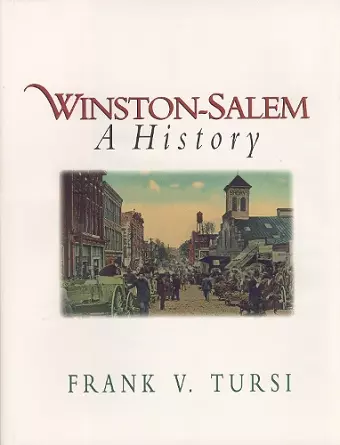Winston-Salem
A History
Format:Hardback
Publisher:John F Blair Publisher
Published:20th Jan '94
Currently unavailable, our supplier has not provided us a restock date

When Bishop August Gottlieb Spangenberg arrived at Muddy Creek in January 1753, he deserved a rest. Sent by the Moravian Church to find land for a settlement, he headed west from Edenton, North Carolina, and spent a tortuous 3 ½ months locating a site, nearly dying of malaria in Granville County, nearly freezing to death near Boone. Today, most people would judge his efforts worth the hardship. He christened the tract on Muddy Creek Der Wachau—Wachovia. It was the future site of Winston-Salem. The people who followed came by an easier route. The Moravians who built Salem came from the north on the Great Wagon Road. R. J. Reynolds, the man who built Winston-Salem, came from the north, too, 120 years after the Moravians. A local writer once said the moving forces behind the hyphenated city were "the Salem conscience and the Winston purse." The Moravians established a tradition of diligence, resourcefulness, piety, and charity. The city's capitalists—chief among them the Reynolds, Hanes, and Gray families—built the greatest industrial center south of Richmond and east of Mississippi. Wachovia Bank and Trust Company grew into one of the best-run banks in the country. P. H. Hanes Knitting Company became the nation's greatest producer of knitwear. R. J. Reynolds Tobacco Company imported so much cigarette paper and tobacco that Winston-Salem—200 miles inland—was declared a port of entry. During its heyday, the company paid its local taxes by delivering a truckload of money to the courthouse steps—daily.
Winston-Salem: A History tells about the city's personalities: Marshall Kurfees, the persistent politician; Simon Green Atkins, who educated the African-Americans who made the city run; Z. Smith Reynolds, whose mysterious death defies explanation; F. Ross Johnson, the most hated man in town; Joe Camel, the reluctant advertising icon. It also tells about the city's coming of age. Since the traumatic buyout of RJR Nabisco in 1989—one of the largest business deals in history—Winston-Salem has started redefining itself. In its efforts to attract new companies, cultivate new leadership, and address problems like race relations, it is confronting its future head-on and pointing confidently toward a new millennium.
Frank Tursi was a newspaper journalist for almost 30 years—the last 23 at the Winston-Salem Journal where he was the environmental and special-projects reporter. He...
ISBN: 9780895871152
Dimensions: unknown
Weight: unknown
310 pages